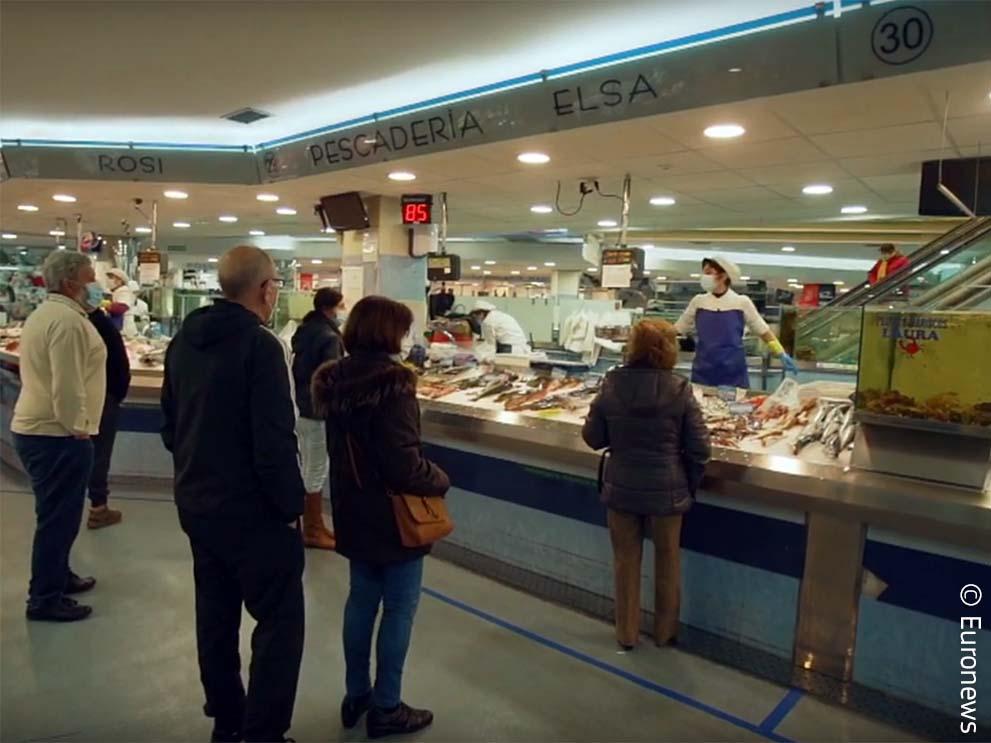
Nearly two thirds of Europeans have fish on their menu several times per month, according to the latest Eurobarometer on EU consumer habits regarding fishery and aquaculture products. The COVID-19 crisis does not seem to have affected significantly the consumption of seafood within the EU, although a slight decrease (-6 percentage points) is observed since 2018, especially for the biggest consumers. Quality and price remain the most important purchasing factors, while demand for more consumer information has increased.
The Eurobarometer survey confirms that the large majority of Europeans (64%) continue to eat fish regularly, preferably at home. Frozen products are the most preferred category, slightly ahead of fresh and tinned products. Close to 80% of consumers buy fishery or aquaculture products at the grocery store, supermarket or hypermarket, far ahead of any other place of purchase. Only a fifth of Europeans (21%, -11 pp since 2018) say they eat fishery or aquaculture products at restaurants and other food outlets at least once a month.
Buying seafood: eyes first, wallet second
When buying seafood, the product’s appearance (e.g. freshness, presentation) is the key purchase factor for 58% of European consumers, but also the main reason for never eating it. The price is also very important (54%) and it remains a barrier for the smallest consumers.
The small share of Europeans who have decreased their consumption of fish during the COVID-19 crisis are most likely to name financial reasons as the main cause, either because fish has gotten more expensive (33%) or because their own financial situation has changed (25%). Promotion of less expensive or less popular but nutritious species is therefore essential.
At the same time, consumers increasing their consumption cited health consciousness (40%) and diet changes (35%) as their main reason for doing so.
Consumers ask for more environmental and freshness information
The survey also confirms the importance of transparent information for all types of fishery and aquaculture products, including processed ones. The origin of the product has gained ground in 21 Member States compared to 2018 and confirms to be the third most important purchase factor.
Europeans value the information they receive thanks to EU legislation, in particular:
- the “use-by” date
- the name of the species
- whether the product is wild or farmed, and
- the area of catch or production
That said, European consumers are also keen to have additional information on the fish they buy. 76% of them would like to see the date of catch/harvest on the label. In addition, environmental information has gained interest since 2018 (+ 5 percentage points) with 44% of consumers declaring that this should appear on the label.
The growing demand from consumers for environmental information, and to a smaller extent for ethical and social information, confirms the relevance of the Farm to Fork strategy and its ambitious agenda to empower consumers for choosing sustainable food.
Wild or farmed: no real issue for EU consumers
The proportion of respondents who hold a strong preference for either wild (32%) or farmed products (7%) has slightly decreased in the majority of Member States. Consumers are now more likely to say that it depends on the type of product, or that they do not know if the products they buy or eat are wild or farmed. In the EU, 25% of all fish and seafood consumed comes from aquaculture.
More information
Blue Farming: the EU’s new aquaculture guidelines
Details
- Publication date
- 9 September 2021
- Author
- Directorate-General for Maritime Affairs and Fisheries
